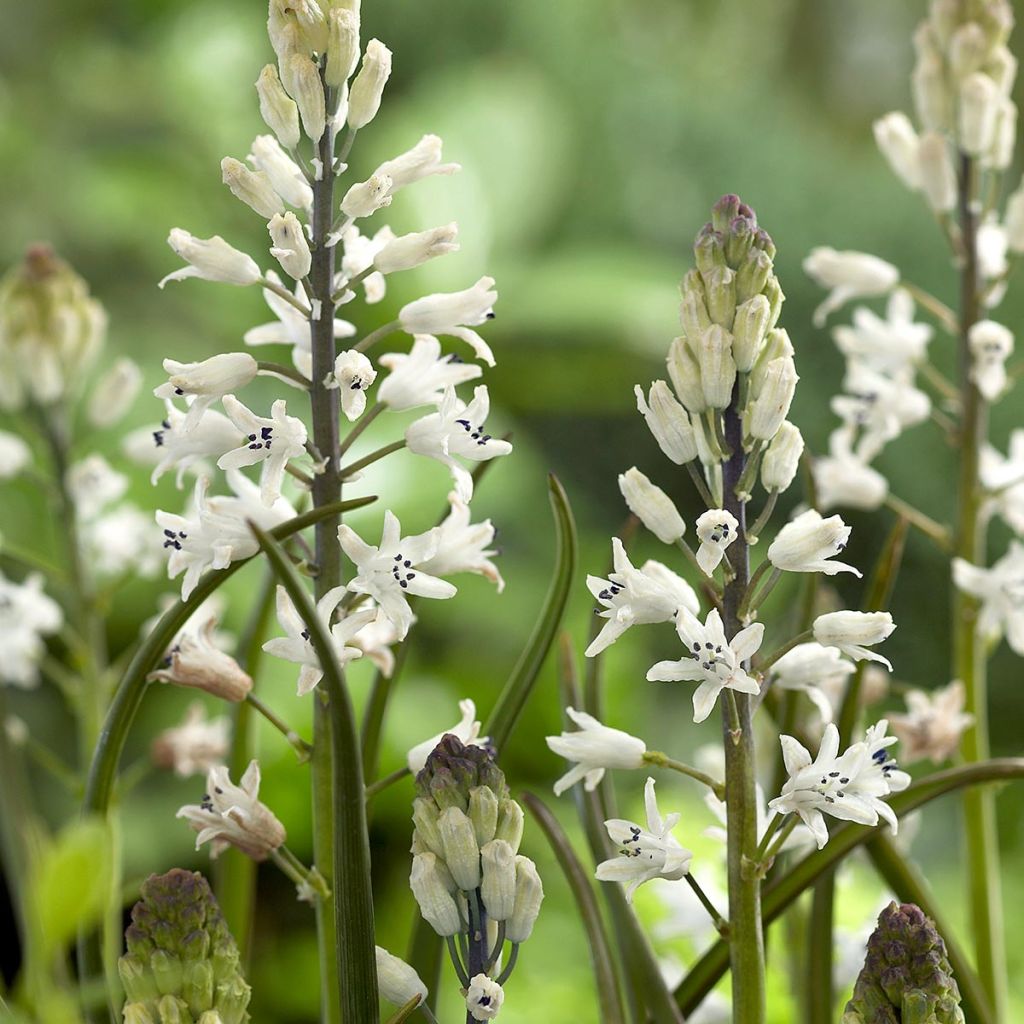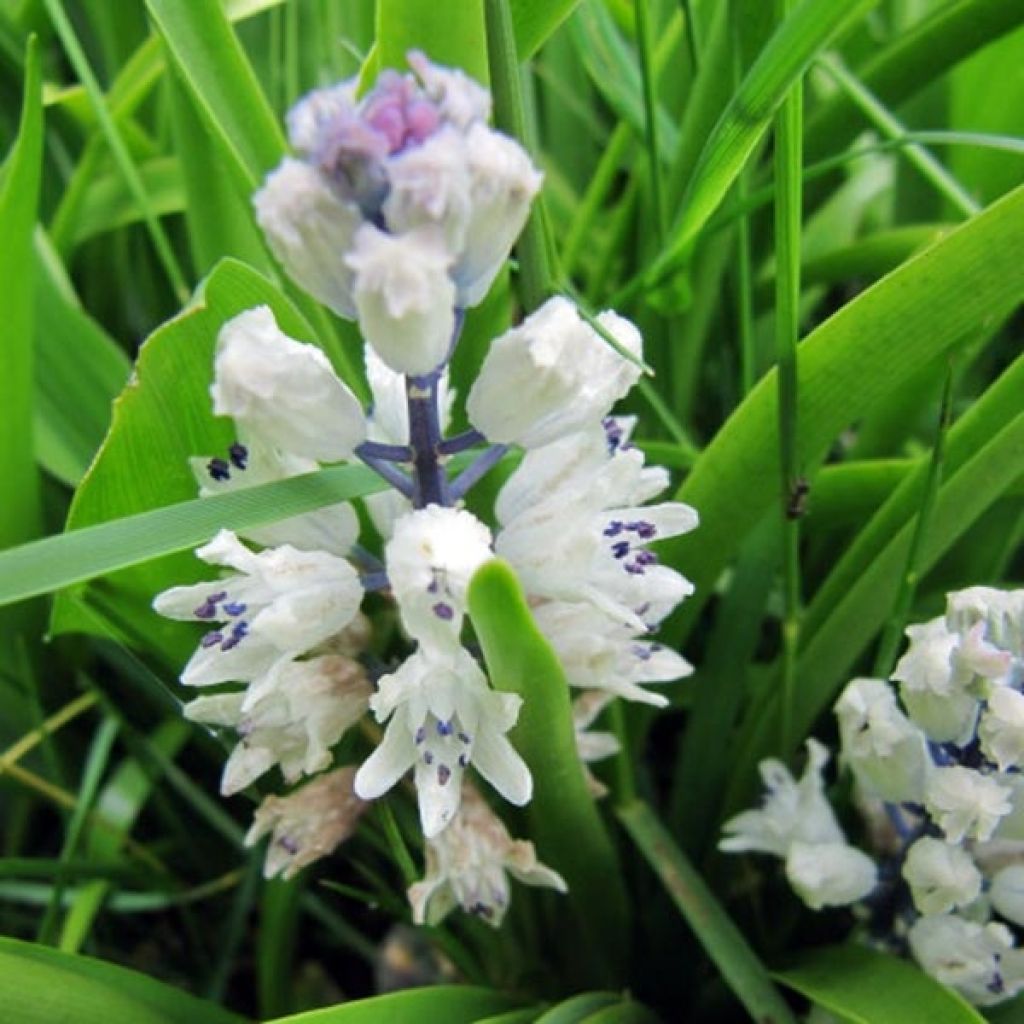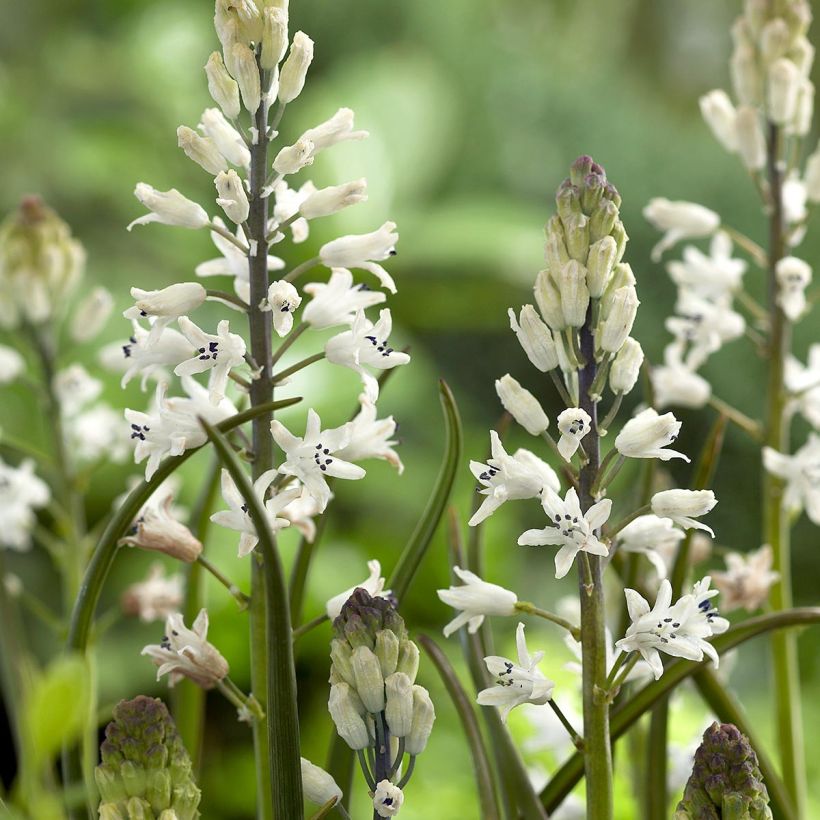

Bellevalia romana - Jacinthe romaine


Bellevalia romana - Jacinthe romaine
Bellevalia romana
Bellevalia romana
Roman Hyacinth, Roman Squill
This plant carries a 6 months recovery warranty
More information
We guarantee the quality of our plants for a full growing cycle, and will replace at our expense any plant that fails to recover under normal climatic and planting conditions.
From €5.90 for pickup delivery and €6.90 for home delivery
Express home delivery from €8.90.
Does this plant fit my garden?
Set up your Plantfit profile →
Description
Bellevalia romana, better known as the Roman hyacinth, will delight botany enthusiasts and collectors of rare plants. Protected and becoming rare in its natural habitat due to the disappearance of flood meadows, this bulbous plant, reminiscent of a white wood hyacinth or a small asphodel, is nonetheless charming. Still unavailable in horticultural trade, little is known about its potential behavior in gardens, but its geographic distribution suggests that it tolerates frost and hot, dry summers.
The Roman hyacinth is often found in wet or flood meadows, such as pastures and along streams, up to an altitude of 700 meters (2297 feet). It is a perennial plant with large oval bulbs that belongs to the asparagus family.
Bellevalia romana begins to grow in winter, with the bulb producing 4 to 5 long, narrow, smooth leaves, 5 to 15 mm (0 to 1in) wide and 20 to 50 cm (8 to 20in) long, gathered in a rosette. The floral stem emerges from between the leaves in late March or early April. It remains shorter than the leaves, but the latter often spread out on the ground. The inflorescence is a elongated, somewhat loose conical cluster, with a dark-coloured main stem. It is adorned with small upright star-shaped bell-like flowers, borne on pedicels longer than the corolla. Their colour is greenish-white with a violet base, but pure white at the tip. The stamens are violet. As they wither, the corolla turns brown. The fruit is a triangular capsule containing 2 rounded seeds. By the end of spring, all vegetation dries up. The bulb goes into dormancy, while the soil dries out.
Plant your Bellevalia romana bulbs in a short grass meadow or at the base of a deciduous tree, with snowdrops for example, or in the company of botanical tulips. Adequate moisture, or at least some soil dampness, is necessary from autumn until June. It also prefers dry summers.
Report an error about the product description
Bellevalia romana in pictures


Plant habit
Flowering
Foliage
Botanical data
Bellevalia
romana
Asparagaceae (Liliaceae)
Roman Hyacinth, Roman Squill
Mediterranean
Planting and care
Plant your Bellevalia romana as soon as possible in a rather rich soil, in full sun or partial shade. Loosen the soil deeply. Plant at a depth of 15 cm (6in) (Bulbs should be covered with twice their height of soil). Space the bulbs 15 cm (6in) apart, making sure they do not touch. Choose a sunny position for better flowering. It is a hardy plant in many regions. A soil that remains cool and damp from autumn to June is essential, but it also prefers a dry soil in summer.
Planting period
Intended location
Care
This item has not been reviewed yet - be the first to leave a review about it.
Haven't found what you were looking for?
Hardiness is the lowest winter temperature a plant can endure without suffering serious damage or even dying. However, hardiness is affected by location (a sheltered area, such as a patio), protection (winter cover) and soil type (hardiness is improved by well-drained soil).

Photo Sharing Terms & Conditions
In order to encourage gardeners to interact and share their experiences, Promesse de fleurs offers various media enabling content to be uploaded onto its Site - in particular via the ‘Photo sharing’ module.
The User agrees to refrain from:
- Posting any content that is illegal, prejudicial, insulting, racist, inciteful to hatred, revisionist, contrary to public decency, that infringes on privacy or on the privacy rights of third parties, in particular the publicity rights of persons and goods, intellectual property rights, or the right to privacy.
- Submitting content on behalf of a third party;
- Impersonate the identity of a third party and/or publish any personal information about a third party;
In general, the User undertakes to refrain from any unethical behaviour.
All Content (in particular text, comments, files, images, photos, videos, creative works, etc.), which may be subject to property or intellectual property rights, image or other private rights, shall remain the property of the User, subject to the limited rights granted by the terms of the licence granted by Promesse de fleurs as stated below. Users are at liberty to publish or not to publish such Content on the Site, notably via the ‘Photo Sharing’ facility, and accept that this Content shall be made public and freely accessible, notably on the Internet.
Users further acknowledge, undertake to have ,and guarantee that they hold all necessary rights and permissions to publish such material on the Site, in particular with regard to the legislation in force pertaining to any privacy, property, intellectual property, image, or contractual rights, or rights of any other nature. By publishing such Content on the Site, Users acknowledge accepting full liability as publishers of the Content within the meaning of the law, and grant Promesse de fleurs, free of charge, an inclusive, worldwide licence for the said Content for the entire duration of its publication, including all reproduction, representation, up/downloading, displaying, performing, transmission, and storage rights.
Users also grant permission for their name to be linked to the Content and accept that this link may not always be made available.
By engaging in posting material, Users consent to their Content becoming automatically accessible on the Internet, in particular on other sites and/or blogs and/or web pages of the Promesse de fleurs site, including in particular social pages and the Promesse de fleurs catalogue.
Users may secure the removal of entrusted content free of charge by issuing a simple request via our contact form.
The flowering period indicated on our website applies to countries and regions located in USDA zone 8 (France, the United Kingdom, Ireland, the Netherlands, etc.)
It will vary according to where you live:
- In zones 9 to 10 (Italy, Spain, Greece, etc.), flowering will occur about 2 to 4 weeks earlier.
- In zones 6 to 7 (Germany, Poland, Slovenia, and lower mountainous regions), flowering will be delayed by 2 to 3 weeks.
- In zone 5 (Central Europe, Scandinavia), blooming will be delayed by 3 to 5 weeks.
In temperate climates, pruning of spring-flowering shrubs (forsythia, spireas, etc.) should be done just after flowering.
Pruning of summer-flowering shrubs (Indian Lilac, Perovskia, etc.) can be done in winter or spring.
In cold regions as well as with frost-sensitive plants, avoid pruning too early when severe frosts may still occur.
The planting period indicated on our website applies to countries and regions located in USDA zone 8 (France, United Kingdom, Ireland, Netherlands).
It will vary according to where you live:
- In Mediterranean zones (Marseille, Madrid, Milan, etc.), autumn and winter are the best planting periods.
- In continental zones (Strasbourg, Munich, Vienna, etc.), delay planting by 2 to 3 weeks in spring and bring it forward by 2 to 4 weeks in autumn.
- In mountainous regions (the Alps, Pyrenees, Carpathians, etc.), it is best to plant in late spring (May-June) or late summer (August-September).
The harvesting period indicated on our website applies to countries and regions in USDA zone 8 (France, England, Ireland, the Netherlands).
In colder areas (Scandinavia, Poland, Austria...) fruit and vegetable harvests are likely to be delayed by 3-4 weeks.
In warmer areas (Italy, Spain, Greece, etc.), harvesting will probably take place earlier, depending on weather conditions.
The sowing periods indicated on our website apply to countries and regions within USDA Zone 8 (France, UK, Ireland, Netherlands).
In colder areas (Scandinavia, Poland, Austria...), delay any outdoor sowing by 3-4 weeks, or sow under glass.
In warmer climes (Italy, Spain, Greece, etc.), bring outdoor sowing forward by a few weeks.


































